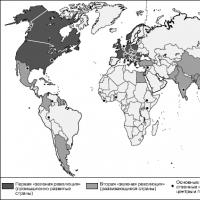Photographer Gian Paolo Barbieri: I have a huge number of nude photos of Monica Bellucci and not a single vulgar one. Gian Paolo Barbieri Gian Barbieri
For the first time, photographs of the cult Italian photographer are presented in St. Petersburg: the Erarta Museum of Contemporary Art is hosting the Fashion and Fiction exhibition - a retrospective reflecting different stages in the development of Barbieri's creative genius.
A great photographer is called a genius for a reason. He revolutionized the history of post-war fashion and photography. It was he who designed the cover of the first Italian Vogue in 1965. After the success in his native land, one after another Barbieri received orders from French, American and German publications. In an era when gloss was gaining its popularity, Barbieri once again did the incredible - he returned to black and white photographs (moreover, he completely abandoned retouching). After all, perfect makeup, perfectly aligned light, playing with shadows and complete understanding between the master and the model created the perfect photo at the exit.

© GIANPAOLOBARBIERI
Barbieri himself came up with images for his models, picked up clothes and accessories, and most importantly, he could see and pull out that very hidden and intimate. This is how the canonical portraits of Audrey Hepburn, Sophia Loren, Jerry Hall, Monica Bellucci, Vivienne Westwood, Maya Plisetskaya and other recognized beauties of the era were obtained.
Barbieri's unique style is largely due to his passion for cinema. The Italian himself was educated in the field of dramatic art, therefore in his works he largely recreated the refined atmosphere of the best films of Italian neorealism. Inspired by Barbieri and American cinema. In the photographs presented at the exhibition, you can easily see references to the work of Alfred Hitchcock or Michael Curtis with his famous "Casablanca".

© GIANPAOLOBARBIERI
Now Barbieri is 79 years old, for more than 40 years he has continued to create and fulfill orders from the most prestigious world publications, embodying his vision of beauty and elegance in his photographs. Valentino, Armani, Versace, Gianfranco Ferré - his authorship belongs to many high-profile advertising campaigns and iconic shots. Despite his advanced age, Barbieri is constantly looking for new directions in his work, one of his last hobbies is still life photography.
The godfather of post-war fashion photography and one of the main portrait painters Audrey Hepburn, Monica Bellucci, Vivienne Westwood and Sophia Loren are taking their works to St. Petersburg. From September 1, Erarta will show the iconic photographs of Gian Paolo Barbieri, who largely made the image of Vogue magazine and the brands Valentino, Armani, Versace and Gianfranco Ferre. We were the first to see the Fashion and Fiction exhibition, organized jointly with the Moscow Multimedia Art Museum, and tell about the most valuable exhibits.
Audrey Hepburn in Valentino. Italian Vogue. Rome, 1969
Barbieri created a fundamentally new format for fashion shooting, taking the dynamism of cinema as a basis and returning to black and white photography, when all gloss was improved in color. His main mentors in art were the German director Ernst Lubitsch, the American director Vincent Minnelli and the author of the most creepy thrillers Alfred Hitchcock, whose techniques he tried to adopt in creating portraits, including the actress Audrey Hepburn. The photo for Italian Vogue, taken in Rome, is his favorite: the clarity of the lines of the Valentino hood and Hepburn's gaze simultaneously attract and repel, because after some time next to the photo the smile of the film star ceases to seem cheerful and emotional.

Jerry Hall at Vivienne Westwood, 1997-1998
In the "wild" photography of the actress, Jerry Hall Barbieri combined the DNA of the Vivienne Westwood brand and the style of Hans Holbein's portraits. The Campaign, filmed in the late 'grunge' 90s, appeals to the artist's medieval works for the royal family: they can be deciphered by arrows with love notes, a jacquard dress with a square neckline, a giant fur coat like that of Henry VIII and a cutter around the neck - no, not the model, and the fluffy animal in her hand.

Simoneta Gianfelici for Valentino, 1983
The iconic photograph of the farewell of Barbieri's lovers was inspired by the tape "Casablanca". The shot with model Simoneta Dzhanfelici repeats the last scene of the film almost in detail, where the heroine Ingri Birdman boarded a plane to Lisbon, and Humphrey Bogart accompanied her with the words: “If you stay, you will be sorry. Perhaps not today, perhaps not tomorrow, but soon and for the rest of his life. "

Pelliccia Veneziani. Italian Vogue, 1975
The editorial of Italian Vogue also cosplayed one of the already existing works, namely the painting by Giovanni Segintini "Windy Mothers". Especially for this, a huge tree was brought to the studio, which Gian Paolo Barbieri cut down with his own hands.

Apollonia, Italian Vogue, 1980
Barbieri loves jazz and constantly includes it in photo shoots - whether the models like it or not. On one of the filming for Vogue Italia, actress Apollonia van Ravenstein picked up saxaphonic waves and began to dance flamenco in a bow of a pleated blouse, pencil skirt, stylish belt made of metallized fabric and a cigarette charismatically taken to her teeth.

Sue Smithers for Yves Saint Laurent. French Vogue. Paris, 1977
Gian Paolo opened the world to more than one professional model, including the main cover girl of the 70s, Sue Smithers. Her debut shooting took place in cold Paris, and the clothes for the shooting were prepared by Yves-Saint Laurent himself.
// Text and photos provided by the organizers of the exhibition //
The government of Moscow; Department of Culture of the city of Moscow; The Multimedia Art Museum, Moscow / Moscow House of Photography Museum presents an exhibition in the framework of the IX Moscow International Biennale "Fashion and Style in Photography - 2015".
Curator: Laura Serani.
Supported by: Ahmad Tea.
Cover author of the first issue of Italian Vogue, one of the best portrait painters in the history of world photography, who created pictures of great movie stars and supermodels: Audrey Hepburn, Sophia Loren, Monica Bellucci, Veruschka and others, Gian Paolo Barbieri was not just a witness to the changes taking place in the fashion world, he he himself had a huge impact on the ongoing changes, in particular, creating a new format of fashion photography in post-war Europe, acting not only as a photographer, but also as a stylist for his models. Gian Paolo Barbieri was born in Milan in 1938 and studied at the Catholic University. He soon moved to Rome, where he trained for a year at the legendary Italian film studio Cinecitta, meeting Luchino Visconti and Federico Fellini, whose work had a huge influence on the formation of the Barbieri style. His shots are incredibly cinematic. Carefully thought of in terms of light, shadow and framing, they deliver the amazing motion effect that has become business card photographer.
Love for cinema has forever become one of the main vectors in the work of Barbieri. Sometimes on purpose, sometimes unwittingly, he constantly refers viewers to the images created by his favorite directors: Ernst Lubitsch, Alfred Hitchcock, Vincent Minnelli, recreating the atmosphere of cult films.
At Cinecitta he was noticed by fashion photographer Tom Cublin, who in 1961 offered Barbieri an assistant position, which allowed him to work with the collections of the fashion houses of Balenciaga and Yves saint Laurent, and discover the world of haute couture. In addition, this experience marked the beginning of a long-term collaboration between Gian Paolo Barbieri and the publishing house Condé Nast.
Since the 90s, having worked with almost all the leading fashion designers and glossy publications, Barbieri turned to travel photography. He filmed the people and nature of Madagascar, Tahiti and the Seychelles. His exotic nude series explores the theme of human sexuality. Currently, Gian Paolo Barbieri spends a lot of time between Seychelles and Milan, where he continues to collaborate with Vogue and Vanity Fair, writes books, works on new projects in the genre of still life, one of his new hobbies.
Gian Paolo Barbieri(eng. Gian paolo barbieri, R. 1938) is an Italian fashion photographer.
Biography, creativity
Gian Paolo Barbieri was born in Milan in 1938. The family of the future photographer was engaged in wholesale trade fabrics, and his father was the owner of a department store. In the 50s, together with friends, he organized the art group "The Trio". In addition, in his youth he was strongly influenced by cinema (even played a small silent role in Luchino Visconti's Medea, 1969 and was a photographer on the set of some scenes in Federico Fellini's La Dolce Vita, 1959).
Gian Paolo Barbieri is considered a self-taught photographer. By his own admission, in his youth he drew inspiration from cinema (Barbieri is even called a cinematographer in the field of photography) and postcards by unknown authors at the turn of the XIX-XX centuries (such postcards were a popular phenomenon of their time, considering this for a long time kitsch. Later they influenced the development of surrealism and some other areas of painting. It is known that such postcards were collected by Salvador Dali and André Breton). For some time I gained experience, working with the famous photographer of the time, Tom Kublin. The beginning professional career Barbieri can be considered a joint publication with Kublin in Harper's Bazaar 20 days before the latter's death. At the beginning of his career, he shot a lot on a white background. Until, on the advice of Gianni Versace, he decided to use real scenery, which also became an innovation for In 1963, Barbieri collaborated for some time with the Italian magazine Novita (in 1965 Novita was transformed into Vogue Italia, for which Barbieri designed the first cover in their history).
In the 1960s, most magazines did not yet have a position of fashion editor and Barbieri himself began to create hairstyles, jewelry, etc. Barbieri often used unusual materials (for example, earrings with table tennis balls painted in pearlescent color). In 1964, Barbieri opened his own studio in Milan and a few years later began collaborating with fashion designers. At the same time, close cooperation with Walter Albini (Walter Albini) served as an occasion for discussion and recognition of the profession of a stylist. The models for the photo shoots of Gian Paolo Barbieri were such stars of the time as Mirella Petteni, Audrey Hepburn, Jerry Hall, Veruschka, Monica Bellucci and many others. The photographer has also collaborated with fashion houses Armani, Versace, Ferre, Dolce & Gabbana, Pomellato and Giuseppe Zanotti.
In the late 1980s, Gian Paolo Barbieri began traveling a lot, retraining as a travel photographer. During this period of his work he created the series Tahiti (1989), Madagascar (1994), etc. Some of his exhibitions in Europe at this time were curated by David Bailey (for example, at the Victoria and Albert Museum in London and at the Kunstforum in Vienna).
In the 2000s, Gian Paolo Barbieri continued to travel, while working on fashion photography for a number of magazines and fashion houses. In 2015, an exhibition of Barbieri's works was held at the 29 Arts In Progress gallery in Milan, where the master presented photographs stylized for various subjects, made in his "special, sensual manner."
Gian Paolo Barbieri traditionally works with an analog camera and does not retouch his photographs. One of his early cameras was the 35mm Reflex Voigtlander. In 1968 he was awarded the Biancamano Prize for Best Italian Photographer and was named one of the 14 Best International Fashion Photographers by the German magazine Stern in 1978.
In Kaliningrad, the exhibition presents all the most famous photographic portraits by Barbieri. The exposition includes photographs for the collections of fashion houses of Versace, Valentino, Yves Saint Laurent, Armani and others, taken in the 70s and 80s.
Superstars are staring at us from black and white photographs.
The years go by, but the stars do not change. If you have become a star, then you are a bright and intelligent person, a personality. Ordinary people change, but stars remain stars, says Gian Paolo and admits that he was lucky with celebrities, they treated the work of a photographer with respect. - When Audrey Hepburn came to me to shoot, she brought slippers from the house. In order not to stain the white background in the studio.
Gian Paolo had a chance to photograph Russian beauties as well.
From working with Maya Plisetskaya, very good impressions... She came to my studio in Milan together with Rudolf Nureyev. They worked in a subtle, elegant manner and did whatever I asked them to do. The peculiarity of Russian women is beauty. They are for me - among the most beautiful women the world, - recalls the photographer.
But some actresses, for example, the charming Monica Bellucci, Barbieri shot naked. By the way, there are also such photographs at the exhibition in Kaliningrad.
Monica Bellucci walked into my studio one fine spring day, wearing a light dress and huge heels. When I saw her, I was numb from beauty, - says the maestro. - When we started working, I realized that Monica can give me a lot. Then I asked her to pose almost naked. At first she refused and said: "This is completely impossible." In those days, I was working with a Polaroid camera, which allowed me to immediately see what was produced ... At some point, Monica softened and said: "Do what you want." I just have a huge amount of nude photos of her! There is no vulgarity in them. She is very sweet, well-mannered.
Selected photographs for the exhibition in Kaliningrad show the entire section of the fasion industry of those years. A separate block of the photo exhibition includes a series of portraits of stars from Europe, the USA and Russia.
The main thing in photography for me is the idea that is formed in my head. I often do a drawing before I start photographing, says the Italian. - Photography has changed a lot with the advent of modern computer technology... A digital photography cannot be compared to analog. There is no retouching or photoshop in my pictures at all. The faces are like that because the makeup was perfect from the start. And the photographers of my time cannot be compared with those of today. And the models of the past - they were all individuals! If it was blonde, then it was blonde! And today all models are equally anarexic.
Gian Paolo took a short tour of Kaliningrad. He especially liked the building of the Königsberg Stock Exchange, where the art gallery will move in the future.
He admitted that he plans to bring another exhibition to Kaliningrad. The master wants to show us a trilogy from books about Tahiti, Seychelles and Madagascar. This is an interesting anthropological project.
Gian Paolo Barbieri is currently working on a project dedicated to the 400th anniversary of the death of William Shakespeare. And recently I finished creating a photo catalog of jewelry and perfume collections for Bulgari.
The exhibition "Fashion and Fiction", which will be taken to St. Petersburg after Kaliningrad, is held in the art gallery until May 17.
FROM THE DOSSIER "KP"
Gian Paolo Barbieri was born in Milan in 1938 (78 years old), studied at the Catholic University. He worked as an assistant to Tom Kublin, got acquainted with the collections of the fashion houses of Yves Saint Laurent and Balenciaga. Then the young photographer was entrusted with creating the cover of the first issue of Italian Vogue. After that, orders from French, German and American publications were poured. The photographer opened his own studio.
Soon he moved to Rome for an internship at an Italian film studio, where he met Luchino Visconti and Federico Fellini.
Barbieri is associated with famous couturiers: for the fashion houses of Armani, Versace and Valentino, he made many famous advertising campaigns and iconic portraits from Audrey Hepburn to supermodels Veruschka and Mirella Petteny.
He not only witnessed the change in fashion and the image of women in the 1960s, but also influenced these changes himself.
Barbieri is called the reformer of the visual reality of the 20th century, the creator of a new format of fashion photography in post-war Europe, one of the best portrait painters in the history of world photography.
x Html code
An Italian photographer told Kaliningraders how he shot a nude Monica Bellucci ..Alexander KATERUSHA
 Extracurricular activity on the topic “Rules of personal hygiene!
Extracurricular activity on the topic “Rules of personal hygiene! Description, features and habitat of a weed chicken
Description, features and habitat of a weed chicken The first stage of the green revolution
The first stage of the green revolution Arborist profession: life in limbo
Arborist profession: life in limbo Prevention of soil erosion
Prevention of soil erosion Galvanized sheet - characteristics and application
Galvanized sheet - characteristics and application Cucumbers in closed (protected) ground Technology of growing cucumbers in closed ground
Cucumbers in closed (protected) ground Technology of growing cucumbers in closed ground